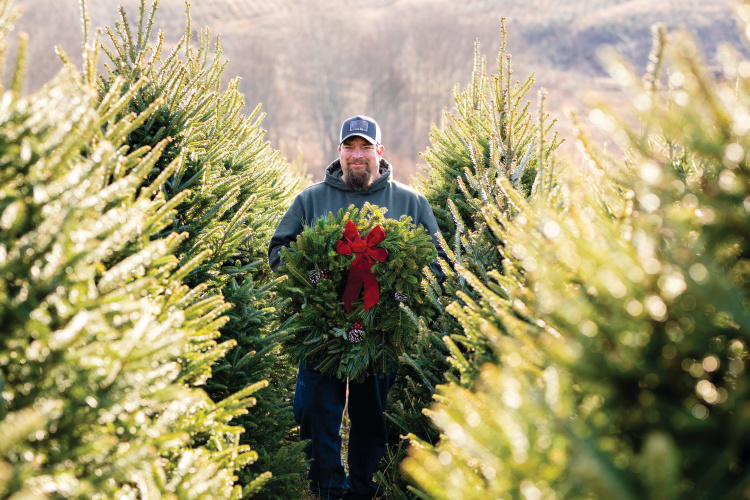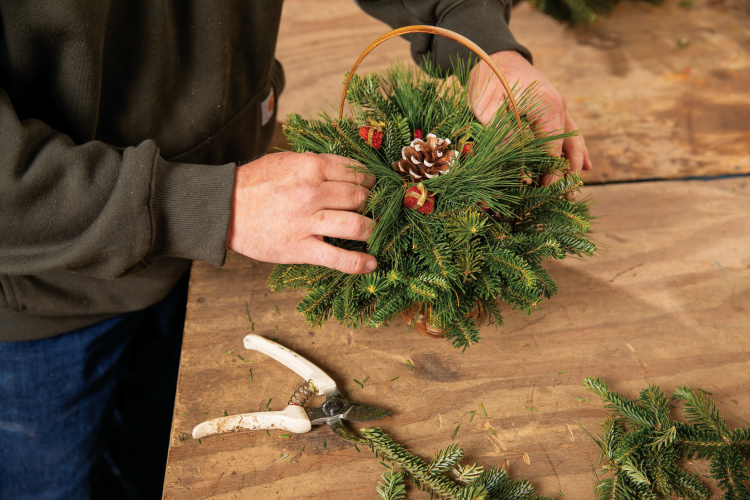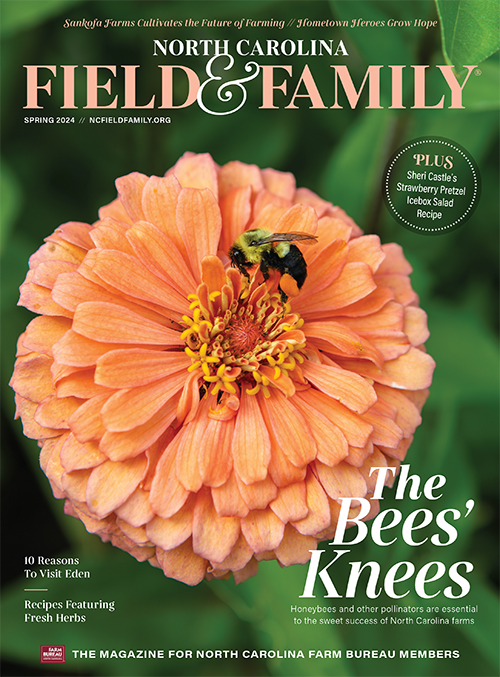Leftover Greenery From N.C. Trees Make an Evergreen Business of Wreaths and Garland
Brad Edwards crafts garland and roping sold in retail stores in about 40 states, along with high-quality wreaths for local customers.
Nancy Henderson |
About 15 years ago, Brad Edwards was working for several Christmas tree growers in western North Carolina, shearing evergreens and spraying for pests, when he noticed a shift in demand. “We were in what we call a glut,” Edwards says. “There were way too many trees, and there were trees getting left in fields and then fields being abandoned.”
So, the industrious Edwards started fashioning the forgotten greenery into wreaths and garlands, enlisted his daughters Mikayla, Carly and Sadie to help out in the shop, and launched Chestnut Grove Farms.
See more: Farm Facts: Christmas Trees
“Crafting evergreen decorations was a lot easier than Christmas tree farming,” Edwards admits.
The material was readily available, unlike Fraser firs, which take about 13 years to grow from seed to market. Before long, he was serving as a “middleman” for major growers in need of large amounts of holiday greenery.

Brad Edwards Branches Out
Edwards now employs 30 to 40 helpers who primarily craft garland and roping sold in retail stores in about 40 states, along with high-quality wreaths for local customers who sell them alongside Christmas trees in seasonal lots. Chestnut Grove Farms supplies packaged 20-foot lengths of greenery to four major Christmas tree farmers in the Sparta area, who sell it at Lowe’s, The Home Depot and other big-box stores.
See more: Choose Your Own Tree at a North Carolina Christmas Tree Farm
In warehouse space rented from a local nursery owner, Edwards and his “elves” work to fill a tractor-trailer with finished garlands and roping every day. The process begins in October, with employees using handmade machines to shape bundles of hardy western red cedar limbs from the Pacific Northwest into garland and roping.
“We also make a small percentage of Fraser fir roping, and we make boxwood roping,” he says. “But the majority of what we do is white pine.”
Extending a Hand
When he’s not bundling decorative greenery, Edwards is helping Christmas tree farmers in Alleghany, Ashe and Watauga counties in a different way. As a program assistant in integrated pest management at the N.C. Cooperative Extension, he spends most of his time in the fields with growers, showing them how to use fewer pesticides, scout for insects and do soil sampling and analysis so they can add the right minerals to produce healthy plants.
“Basically, I do anything to do with growing a Fraser fir Christmas tree, from the time it’s planted as a seed all the way through to the time it’s cut down and delivered.”

As if Fraser firs weren’t hard enough to grow – the “Cadillac of Christmas trees” only thrives in a few places in the country and it needs lots of space – a troublesome soil-borne disease called Phytophthora can destroy an entire crop. What’s more, a Fraser fir tends to cost more than other trees. But Edwards says that doesn’t keep customers from buying them up.
“The reason people like the Fraser is because it’s got strong branches,” Edwards says. “It’s got this super, super good fragrance, and the trees are also just pleasant to touch. The Fraser stands far above all other trees when it comes to what people choose to have in their homes.”
The days of discarded evergreen branches littering the fields is long gone.
“Now, Christmas trees are bringing as much as they’ve ever brought in history,” Edwards says. “And that makes the brush, or the greenery, a lot more expensive and a lot harder to get.”
See more: 5 North Carolina Choose-and-Cut Christmas Tree Farms
Balancing Act
Fortunately, Edwards can use accumulated comp and vacation time from his extension job to run his greenery business, taking off two days a week during peak season from mid-October to early December. Still, it takes lots of energy.
“I grew up in construction and we worked long hours,” he says. “Then I was doing contract farm work where I had a small crew. So, I’ve always had long-hour days.”
The excitement of supplying products that make people happy keeps him going.
“I’m lucky I was born and raised in these mountains. And I’m lucky I get to do what I do for a living every single day year-round,” Edwards says. “And I’m lucky that I get to take what we can grow here in nature and create things out of that, and that other people all around the country are able to enjoy just a little part of our North Carolina mountains.”
– Nancy Henderson


